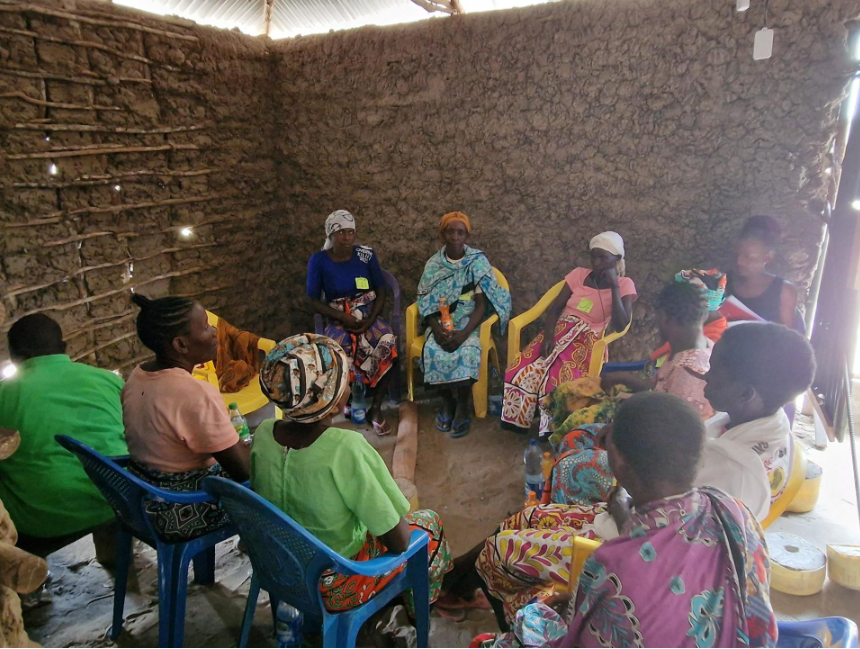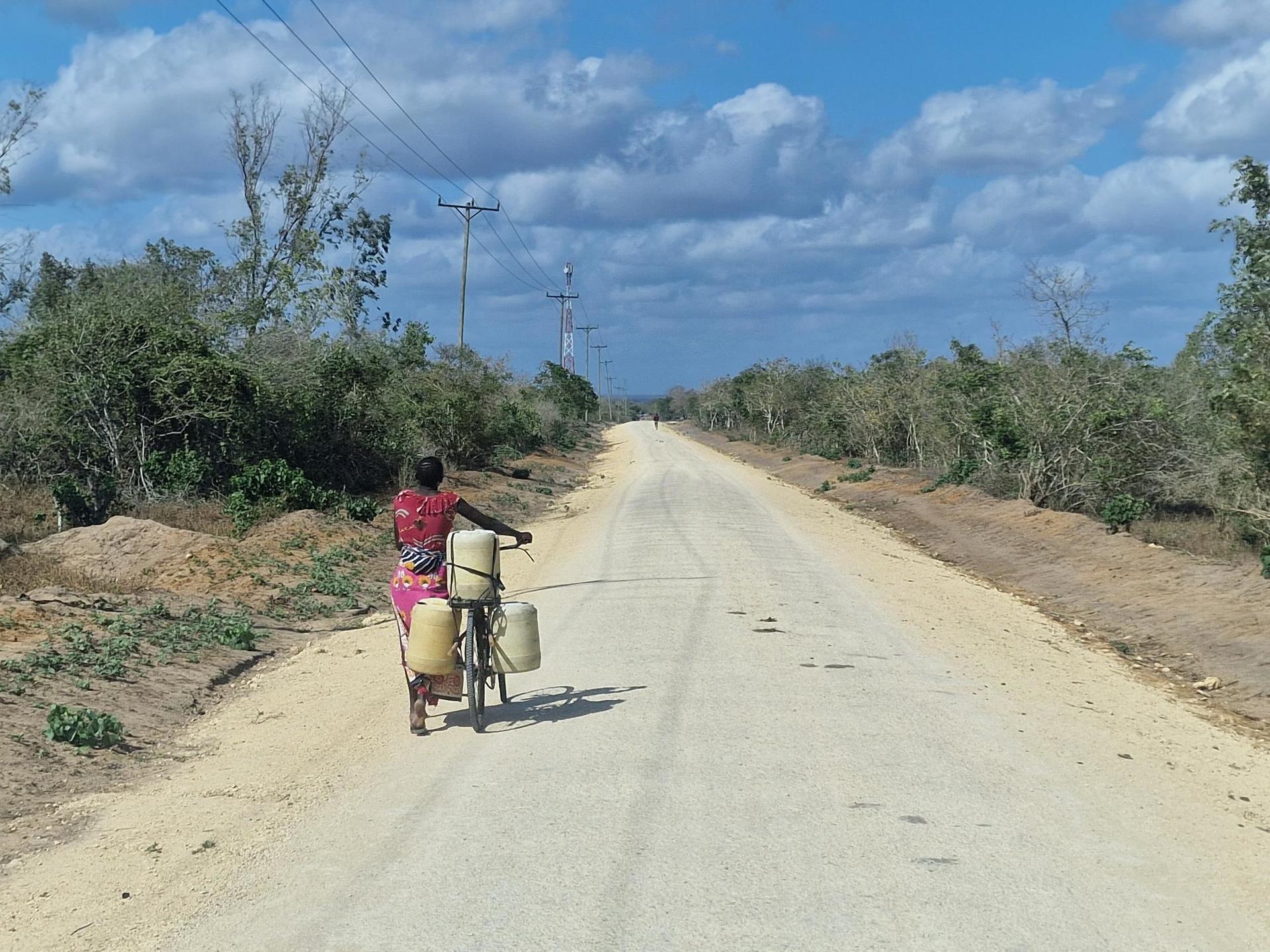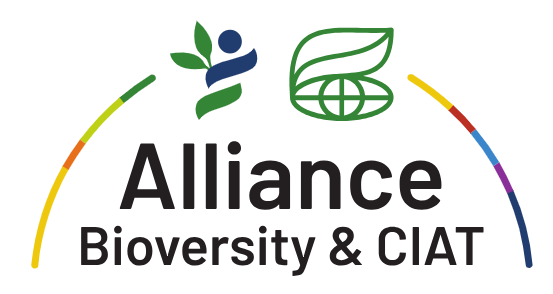In the past few years, most women and youths in Kilifi County have struggled with access to water for diverse activities due to climate change, limited networks, and income. Thus, access to and use of water is often negotiated and shaped by intrahousehold dynamics and government institutions. While women tasked to provide water for their families create networks to sustain access to water and diversify water sources. men move out for better jobs, and youths take up commercial water provision roles.
“Fetching water is normally a woman’s responsibility. This can be a dangerous, time-consuming and physically demanding task. Long distance by foot, often more than once a day, can leave women vulnerable to attack and often exclude them from earning an income.”
Approximately 72% of Kenya’s 55 million people live in rural areas (World Bank, 2022a), and primarily depend on agriculture for their livelihoods. In Kilifi County, particularly Bomani and Kidzini North sub-counties, the land tenure system is complex. While women have a predominant role in subsistence agriculture due to the out-migration of men to urban areas, only five percent of the land is registered to women (NEMA, 2010). With increased urbanization and land sales, land parcels are shrinking, and farmers are increasingly pushed onto more marginal lands.
Severe water stress in Bomani and Kidzini North has led to the ad hoc development of a complex water system. The understanding of who controls the water provisioning, management, and governance among the diverse water sources and actors is often blurred. Some say it is the government, while others believe it’s individuals. This is sometimes linked to who owns the land in which the water is located.
Norms surrounding water use and management are extremely gendered at the household level in these areas. The community deem that Water provisioning, monitoring, and management is part of day-to-day domestic work, making it women’s responsibility according to local gender roles. In addition to being the primary water fetchers, women are also the main water users, having the key responsibility of cooking, cleaning, washing clothes, bathing children, etc. This means they are aware of the quantity of water needed, used, and kept at home. Conversely, men provide money to buy water when suitable water is not freely available, although women contribute money to water provisioning as well.
The coming together of community members to form a water committee helps manage current water sources and water access. This is made possible through the creation and implementation of rules that guide the daily operations, maintenance, and use of the water source. One rule that perpetuates a sense of ownership, hence a duty to preserve the source, is community participation in routine maintenance tasks like fencing and removing sand.

Image credit: The Alliance of Bioversity International and CIAT
The role of women in water management, and selling, is evident in this study. While the water committees have female representatives, women have direct management roles even in privately owned water sources and are cited as people who sell water. That is, wives of owners of water sources were frequently cited as managers of the water points, even though the men decided on the money gotten from these water points. The individuals and committees oversee the day-to-day running of the water sources and make decisions.
Interestingly, women have proven to be key actors in household and community-level water security and resilience, but this resilience comes at a cost. To survive, the local villagers have developed various coping mechanisms to ensure that water is available during times of scarcity. The tradeoffs are dire, with women mostly impacted by increased labor burdens and decreased economic opportunities. With the consequences of climate change, the situation will be exacerbated with the men moving away to seek refuge and livelihood opportunities in the city.
To build resilience, the communities have put in place mechanisms to cope with water shortages and insecurity. These mechanisms are designed to help individuals and households’ access and replenish water during the year. Diversification of water sources, rather than relying on a single source, is such a mechanism to cope with water scarcity. In cases of prolonged drought, purchasing water is one major way people have to sustain water in their households.

Image credit: The Alliance of Bioversity International and CIAT
The system’s redundancies have created pockets of resilience in the face of insecure and often unpredictable water availability. The decreased availability of free and easily accessible water has led to the development of a cottage industry around water selling provisioning. However, the benefits from these increased income-earning opportunities are skewed toward young men with access to motorbikes and wealthier community members who own tanks, which afford them the luxury of having excess water to sell. Seasonal flexibility in otherwise rigid social rules could serve as an entry point for future interventions to foment gender transformation in water use and management, as well as in the community at large.
In delivering the water projects, there is a need to involve the local people and delineate the felt and strategic needs. Construction of more water sources, such as building water pipes of community water to the villages that don’t have communal water and boreholes, will not only increase water access but also reduce the time and other resources taken to obtain water. Identification of strategic places to construct these water points should be taken in a participatory manner together with different representatives of the community to ensure that the water points will serve the community members and reduce the risk of excluding some members.
This article was originally posted on The Alliance of Bioversity International and CIAT website. The work discussed was supported by the REACH programme funded by UK Aid from the UK Foreign, Commonwealth and Development Office (FCDO) for the benefit of developing countries (Programme Code 201880), the Water Security and Sustainable Development Hub, which was funded by the UK Research and Innovation’s Global Challenges Research Fund (GCRF) (Grant no.: ES/S008179/1), and the Measures for Advancing Gender Equality (MAGNET) initiative funded by the Bill and Melinda Gates Foundation


